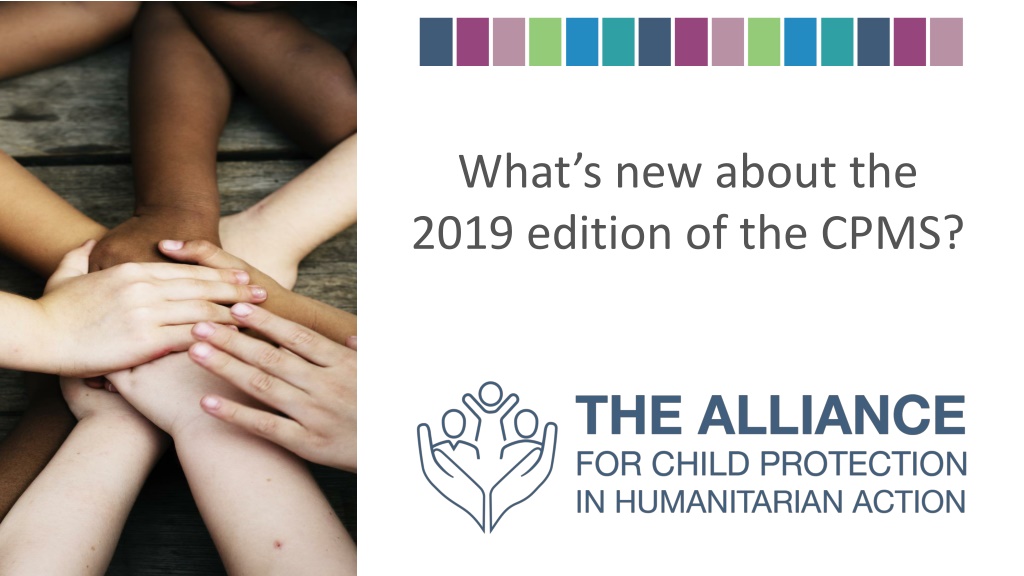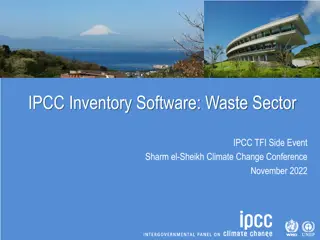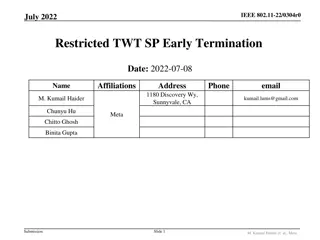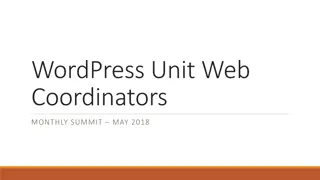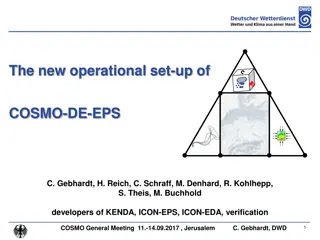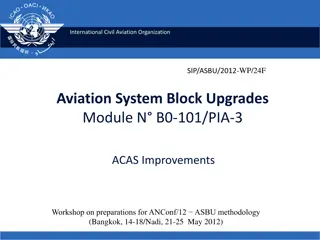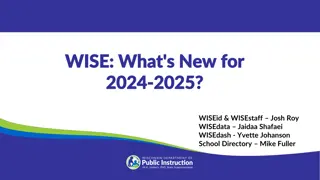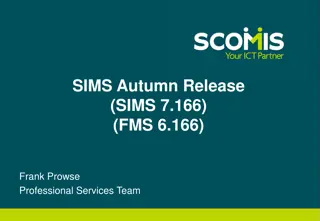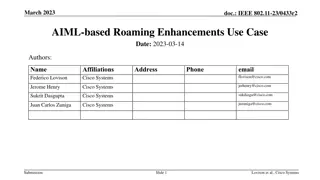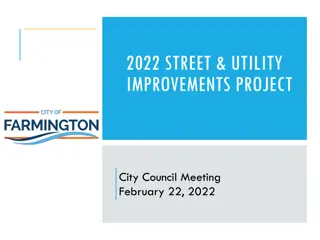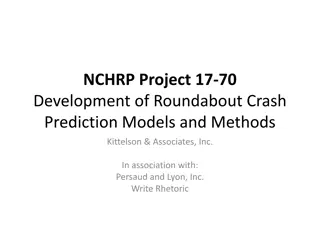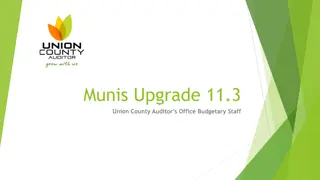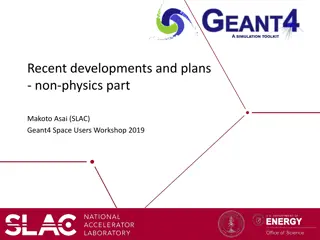Exploring the 2019 Edition of CPMS - Improvements and Enhancements
The 2019 edition of the CPMS (Child Protection Minimum Standards) has been enhanced to address gaps identified in the 2012 edition, such as emphasizing the role of local actors, accountability, inclusion, prevention, integration, and collaboration. Expert teams reworked each standard through country-level and global consultations, making the standards applicable to a wider range of contexts. The revised edition encourages contextualization to create ownership at every level and connects with other humanitarian standards and initiatives. The design remains user-friendly with added icons for quick reference.
Download Presentation

Please find below an Image/Link to download the presentation.
The content on the website is provided AS IS for your information and personal use only. It may not be sold, licensed, or shared on other websites without obtaining consent from the author. Download presentation by click this link. If you encounter any issues during the download, it is possible that the publisher has removed the file from their server.
E N D
Presentation Transcript
Whats new about the 2019 edition of the CPMS?
2012 edition Hugely popular 74 000 users in 50+ countries 14 translations 18 countries contextualised/adapted it 2nd most downloaded set of standards on HSP app
2012 edition However, there were gaps Some core principles were sidelined Needed more comprehensive and realistic measurement More emphasis was needed on: The role of local actors Accountability and inclusion Prevention Integration and collaboration across sectors Updates needed on effective interventions and Cross- cutting issues had evolved Cash and voucher assistance Gender & LGTBI issues Environmental concerns Mobile programming
2012 edition It needed to be applicable to wider range of contexts Children and families who are refugees, displaced, or in migration contexts Infectious disease settings Urban areas Dangers and opportunities of internet/ information technology to protect children
Expert teams reworked each standard, which went out for country level and global consultations The revision process
Introducing the 2019 edition
2019 edition Things to remember as we explore the 2019 edition These global standards continue to provide a benchmark for CPHA. Contextualisation of the CPMS is encouraged and can create ownership of the standards at every level.
2019 edition Connections to other standards & initiatives The CPMS remain a collaborative, inter- agency tool, making links with new initiatives, such as the Core Humanitarian Standard, INSPIRE and the Humanitarian Inclusion Standards.
2019 edition The same great design The colour coding is the same, the tabs to find things The spiral binding But we added icons to remind us of connections to make & cross-cutting issues to consider
Guess the icon 2019 edition The same great design
2019 edition The same great design Look out for icons as you review the 2019 edition! Consider: what do these mean for your ways of working?
2012 edition 2019 edition
2019 edition Our 10 Principles Haven t changed but All 10 are grouped together as equals Woven into each standard as a reminder
2019 edition Overall introduction Provides deeper explanation of Child Protection in Humanitarian Action Its international legal basis The CPMS - who they are for, how they were developed, how to use them Connections with other standards Cross-cutting issues
Pillar 1 to ensure a quality response Standard 1: coordination in both cluster and refugee settings Standard 4 : Stronger child development and protection lens Standard 5: significant update to reflect new IM tools and ethical concerns Throughout: Stronger emphasis on child safeguarding and PSEA
Pillar 2 child protection risks Standard 8 : Physical and emotional maltreament Neglect + Emotional Abuse Reflecting the new evidence Standard 9 : Includes broader gender- based violence: Reflects gender inequality as root cause Social and gender norms change where possible Strengthens survivor-centered approach
Pillar 3 to develop adequate strategies Framed by the socio-ecological model & systems thinking Links with INSPIRE
Pillar 3 to develop adequate strategies New standards on Strengthening family & caregiving environments Alternative care Significant updates: Standard 15: more than CFS! Standard 17: working towards community-led processes Standard 20: a protective strategy!
Pillar 4 to work across sectors Integrated approaches, joint programming and child protection mainstreaming Increasing recognition of the Centrality of Protection across all sectors. Highlights negative impacts of sectoral programming which is blind to child protection risks.
Pillar 4 to work across sectors New Standards: 21: Food security & CP 22: Livelihoods & CP Integration of distribution across standards Key Actions for: CP actors, other sectoral actors, Both CP & sectoral actors together
Annexes Relatively unchanged On line: Extensive glossary Resource list that will be updated Major addition - Table of indicators
Global roll-out 2020-2021 Activity Anticipated date Global launch of handbook, online tool and app in English October 15 Geneva UK launch November 20 London What s New video & first global and regional webinars December 2019 Global launch of all materials in French, Spanish & Arabic January / February 2020 Update of Alliance Face to Face training materials to align with 2019 edition Early 2020 Country level support for launches, planning sessions, contextualisation Ongoing cpms.wg@alliancecpha.org
POP QUIZ!! It s open book; the first hand that I see gets to answer the question 1. Which standard do I go to if I want to find out more about foster care arrangements for refugee children? 2. Draw the icon for integration between CP and all other sectors. 3. Where can I get more information beyond the standard itself? 4. Under which pillar is Justice for Children? 5. What percentage of the deaths of children (5-14) are attributable to unintentional injury? 6. What is the topic of the last guidance note in the Physical and Emotional Maltreatment standard?
Need more than the printed version? On the Humanitarian Standards Partnership website, you will find: http://www.humanitarianstandardspartnership.org/ 1. Online, interactive handbook 2. HSP App 3. Downloadable PDF On the Alliance website, you will find (links to the above and): http://www.cpie.info/2019cpms 1. 32 page Summary PDF 2. This What s New Briefing Pack
Implications for us? Let s start to consider what we want to do with the 2019 edition
